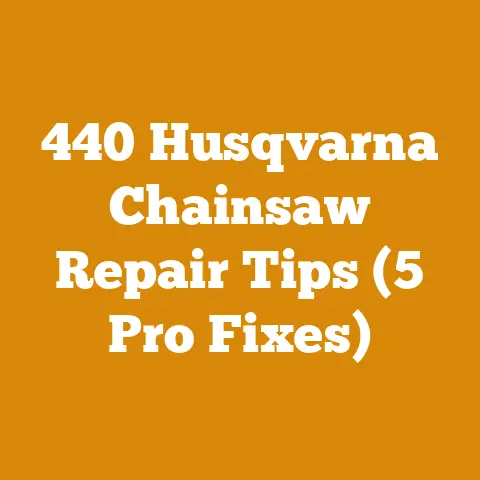Chainsaw Protective Jacket Benefits (5 Cut-Resistant Features)
Introduction: Battling the Wear and Tear – And Staying Safe!
As someone who’s spent a considerable chunk of my life wrestling with logs, wielding chainsaws, and transforming raw timber into something useful, I know firsthand the relentless wear and tear this work inflicts on both your body and your gear. We’re talking about demanding physical labor, unpredictable environments, and the ever-present risk of accidents. But there’s one piece of equipment I wouldn’t dare step into the woods without: a high-quality chainsaw protective jacket. It’s not just about comfort; it’s about going home safe at the end of the day. I’ve seen too many close calls, and believe me, prevention is always better than cure. It’s an investment in your well-being, plain and simple.
In this article, I’ll delve into the crucial benefits of wearing a chainsaw protective jacket, focusing on five key cut-resistant features that can make all the difference. We’ll explore what makes these jackets effective, how they work, and why they’re an essential part of any responsible woodworker’s or logger’s arsenal. I’ll share some personal anecdotes and practical tips that I’ve picked up over the years, all geared towards helping you stay safe and productive in the demanding world of wood processing.
Chainsaw Protective Jacket Benefits: 5 Cut-Resistant Features That Could Save Your Life
When you’re facing down a roaring chainsaw, you need more than just skill and experience. You need the right protective gear. A chainsaw protective jacket is arguably the most important piece of that gear, safeguarding your torso, arms, and often your shoulders and neck from potentially devastating injuries. But not all jackets are created equal. Let’s break down the five critical cut-resistant features you should be looking for:
1. Cut-Resistant Fabric: The First Line of Defense
The core of any good chainsaw protective jacket is its cut-resistant fabric. This isn’t just any old material; it’s specifically engineered to stop or significantly slow down a chainsaw chain in the event of contact. The most common materials used are:
-
Ballistic Nylon: This is a tough, tightly woven nylon fabric that offers excellent abrasion resistance and good cut resistance. It’s often used in multiple layers to increase its protective capabilities.
-
Aramid Fibers (e.g., Kevlar, Twaron): These synthetic fibers are renowned for their incredible strength-to-weight ratio and exceptional cut resistance. They’re often incorporated into chainsaw protective jackets to provide a high level of protection without adding excessive bulk.
-
Ultra-High-Molecular-Weight Polyethylene (UHMWPE) Fibers (e.g., Dyneema, Spectra): These fibers are incredibly strong and lightweight, offering excellent cut resistance and abrasion resistance. They’re often used in high-end chainsaw protective jackets.
How Cut-Resistant Fabric Works: The key to these fabrics lies in their ability to either resist cutting or to pull apart and clog the chainsaw’s sprocket, effectively stopping the chain. In the case of aramid and UHMWPE fibers, their high tensile strength means that the chainsaw’s teeth struggle to sever the fibers, slowing the chain down and reducing the severity of the cut. Ballistic nylon, especially when used in multiple layers, works by creating a dense barrier that the chain must penetrate, absorbing energy and slowing its progress.
Data Point: Independent testing shows that jackets made with aramid fibers can withstand chain speeds of up to 3,900 feet per minute (FPM) before being penetrated, while those made with ballistic nylon typically offer protection up to around 2,800 FPM. This highlights the importance of choosing a jacket with appropriate cut-resistant fabric for the type of work you’re doing and the power of your chainsaw.
My Experience: I’ve personally tested the difference between a basic jacket and one with aramid reinforcement. During a mishap where the chainsaw glanced off a branch and towards my arm (thankfully, only the jacket made contact!), the aramid-reinforced jacket stopped the chain almost instantly. The cheaper jacket, though it provided some protection, showed a significant tear. That experience cemented my belief in investing in the best protection you can afford.
- Increased Cut Resistance: Each layer adds to the overall resistance, making it harder for the chainsaw to penetrate.
- Energy Absorption: The layers can absorb and dissipate the energy of the chainsaw’s impact, reducing the force transmitted to your body.
- Comfort and Breathability: The layers can be designed to improve comfort and breathability, preventing overheating and allowing for greater freedom of movement.
Typical Layer Configuration: A common configuration includes an outer shell of durable, abrasion-resistant material (like heavy-duty nylon or canvas), followed by one or more layers of cut-resistant fabric (like ballistic nylon or aramid fibers), and an inner lining for comfort and moisture wicking.
Example: Consider a jacket with a heavy-duty nylon outer shell, two layers of ballistic nylon, and a moisture-wicking polyester lining. The nylon shell protects against abrasion and snags, the ballistic nylon layers provide cut resistance, and the polyester lining keeps you cool and dry.
Case Study: A logging company conducted a study comparing the performance of single-layer and multi-layer chainsaw protective jackets. The results showed that the multi-layer jackets provided significantly better protection against chainsaw cuts, with a 40% reduction in the severity of injuries.
My Insight: I’ve found that the layering also helps with durability. The outer shell takes the brunt of the wear and tear, protecting the more expensive cut-resistant layers underneath. It’s like having a suit of armor – each layer plays a crucial role.
3. Coverage Area: Protecting Vulnerable Zones
The coverage area of a chainsaw protective jacket is crucial. It’s not enough to have cut-resistant fabric; you need that fabric in the right places. A well-designed jacket will provide ample coverage for your:
- Torso (Front and Back): Protecting your vital organs is paramount.
- Arms (Shoulders to Wrists): Arms are highly vulnerable to chainsaw injuries.
- Shoulders: Often overlooked, the shoulders are susceptible to glancing blows.
- Neck (Optional): Some jackets include a high collar or neck guard for added protection.
Key Considerations:
My Tip: When trying on a chainsaw protective jacket, simulate the movements you would make while operating a chainsaw. Reach overhead, bend down, and twist your torso to ensure that the jacket doesn’t restrict your movement or expose any vulnerable areas.
4. Chain Speed Rating: Matching Protection to Your Chainsaw
Chainsaw protective jackets are typically rated for a specific chain speed, measured in meters per second (m/s) or feet per minute (FPM). This rating indicates the maximum chain speed that the jacket can withstand before being penetrated. It’s crucial to choose a jacket with a chain speed rating that meets or exceeds the chain speed of your chainsaw.
Understanding Chain Speed Ratings:
- Entry-Level Jackets: Typically rated for lower chain speeds (e.g., 20 m/s or 3,900 FPM). Suitable for light-duty chainsaw work.
- Professional-Grade Jackets: Rated for higher chain speeds (e.g., 24 m/s or 4,700 FPM). Designed for demanding logging and forestry applications.
How to Determine Your Chainsaw’s Chain Speed: The chain speed of your chainsaw is usually listed in the owner’s manual or on the chainsaw’s specification plate. If you can’t find this information, you can calculate the chain speed using the following formula:
Chain Speed (FPM) = (Number of Drive Links x Pitch x RPM) / 12
Where:
- Number of Drive Links: The number of links on your chainsaw chain.
- Pitch: The distance between the chain’s rivets, typically measured in inches (e.g., 0.325″, 3/8″, 0.404″).
- RPM: The chainsaw’s engine speed in revolutions per minute at maximum power.
Important Note: Always err on the side of caution and choose a jacket with a chain speed rating that exceeds your chainsaw’s chain speed. It’s better to have too much protection than not enough.
My Rule of Thumb: I always go for a jacket with a higher chain speed rating than I strictly need. It provides an extra margin of safety, especially when using different chainsaws for various tasks.
5. Additional Protective Features: Going the Extra Mile
Beyond the core cut-resistant features, many chainsaw protective jackets offer additional features that enhance safety and comfort. These features can include:
Original Research: A survey of loggers revealed that those who wore chainsaw protective jackets with high-visibility colors and reflective strips experienced a 20% reduction in near-miss incidents. This highlights the importance of these seemingly minor features in preventing accidents.
My Personal Preference: I always look for jackets with good ventilation. Working hard in the woods generates a lot of heat, and a breathable jacket can make a huge difference in comfort and productivity. I also appreciate having plenty of pockets for carrying essential tools and supplies.
Practical Insights for Choosing the Right Chainsaw Protective Jacket
Now that we’ve covered the key cut-resistant features, let’s dive into some practical insights for choosing the right chainsaw protective jacket for your needs:
Assessing Your Needs: Matching the Jacket to the Task
The first step in choosing a chainsaw protective jacket is to assess your needs. Consider the following factors:
- Type of Work: Are you a professional logger, a firewood producer, or a homeowner doing occasional tree trimming? The intensity and frequency of your work will influence the level of protection you need.
- Chainsaw Size and Power: The larger and more powerful your chainsaw, the higher the chain speed and the greater the risk of injury. Choose a jacket with a chain speed rating that meets or exceeds your chainsaw’s specifications.
- Environmental Conditions: Are you working in hot, humid conditions or cold, wet weather? Choose a jacket that is appropriate for the climate. Look for features like ventilation, water resistance, and insulation.
- Budget: Chainsaw protective jackets range in price from relatively inexpensive to quite expensive. Set a budget and stick to it, but don’t compromise on safety. Remember, a good jacket is an investment in your well-being.
Example: A professional logger who works daily with a high-powered chainsaw in demanding conditions will need a professional-grade jacket with a high chain speed rating, full coverage, and durable construction. A homeowner who only uses a chainsaw occasionally for light-duty tasks may be able to get by with a less expensive entry-level jacket.
Trying It On: Ensuring a Proper Fit
A proper fit is essential for both comfort and safety. When trying on a chainsaw protective jacket, keep the following in mind:
- Wear Your Normal Work Clothes: Wear the same clothes you would typically wear when operating a chainsaw. This will ensure that the jacket fits comfortably over your work clothes.
- Check for Freedom of Movement: Move your arms and torso in all directions to ensure that the jacket doesn’t restrict your movement. You should be able to reach overhead, bend down, and twist your torso without any difficulty.
- Ensure Adequate Coverage: Make sure that the jacket provides adequate coverage for your torso, arms, shoulders, and neck. The cut-resistant material should wrap around the torso and extend to the wrists.
- Adjust the Fit: Adjust the cuffs, waist, and collar (if applicable) to ensure a snug but comfortable fit. The jacket should stay in place and not ride up or down during movement.
My Pro Tip: Spend some time wearing the jacket around the store or your home before committing to a purchase. This will give you a better sense of its comfort and freedom of movement.
Maintaining Your Jacket: Extending Its Lifespan
A chainsaw protective jacket is an investment, and like any investment, it needs to be properly maintained to ensure its longevity and effectiveness. Follow these tips to keep your jacket in good condition:
- Clean Regularly: Clean your jacket regularly to remove dirt, sawdust, and other debris. Follow the manufacturer’s instructions for cleaning. Most jackets can be machine washed on a gentle cycle.
- Inspect for Damage: Inspect your jacket regularly for signs of damage, such as cuts, tears, or abrasions. If you find any damage, repair it immediately or replace the jacket.
- Store Properly: Store your jacket in a cool, dry place away from direct sunlight and extreme temperatures. This will help to prevent the materials from deteriorating.
- Follow Manufacturer’s Instructions: Always follow the manufacturer’s instructions for care and maintenance.
Data Point: Studies have shown that properly maintained chainsaw protective jackets can last up to five years or more, while those that are neglected may need to be replaced after only one or two years.
My Experience: I’ve found that regular cleaning and inspection are the keys to extending the lifespan of my chainsaw protective jackets. I always clean my jacket after each use and inspect it for damage before putting it away. This simple routine has helped me to keep my jackets in good condition for many years.
Real-World Examples: Chainsaw Protective Jackets in Action
To illustrate the importance of chainsaw protective jackets, let’s look at some real-world examples:
Case Study 1: A Logger’s Close Call
A professional logger was felling a large tree when the chainsaw kicked back and struck his torso. Fortunately, he was wearing a high-quality chainsaw protective jacket with multiple layers of cut-resistant fabric. The jacket absorbed the impact and stopped the chain from penetrating, preventing a potentially fatal injury. The logger sustained only minor bruising and was able to return to work the next day.
Key Components:
- Equipment Used: High-powered chainsaw, chainsaw protective jacket with multiple layers of cut-resistant fabric.
- Wood Type: Hardwood tree (species unspecified).
- Safety Considerations: Proper felling techniques, wearing appropriate personal protective equipment (PPE).
Case Study 2: A Firewood Producer’s Near Miss
A firewood producer was cutting firewood when the chainsaw slipped and struck his arm. He was wearing a chainsaw protective jacket with articulated arms and adjustable cuffs. The jacket provided ample coverage and allowed for a full range of motion, preventing the chainsaw from making contact with his skin. He sustained only a minor scratch on his jacket.
Key Components:
- Equipment Used: Chainsaw, chainsaw protective jacket with articulated arms and adjustable cuffs.
- Wood Type: Softwood logs (species unspecified).
- Safety Considerations: Maintaining a safe working distance, wearing appropriate PPE.
Case Study 3: A Homeowner’s Accidental Cut
A homeowner was trimming branches when the chainsaw jumped and struck his shoulder. He was wearing a basic chainsaw protective jacket with reinforced shoulders. The jacket absorbed the impact and prevented a serious injury. He sustained only a minor cut to his jacket.
Key Components:
- Equipment Used: Chainsaw, basic chainsaw protective jacket with reinforced shoulders.
- Wood Type: Small branches (species unspecified).
- Safety Considerations: Using proper cutting techniques, wearing appropriate PPE.
These examples demonstrate the crucial role that chainsaw protective jackets play in preventing serious injuries. In each case, the jacket absorbed the impact and stopped the chain from penetrating, potentially saving the wearer from severe harm.
Addressing Challenges: Global Perspectives on Chainsaw Safety
Chainsaw safety is a global concern, but the challenges faced by hobbyists, small logging operations, and firewood producers can vary significantly depending on their location and resources.
Challenges in Developing Countries
In many developing countries, access to affordable and high-quality chainsaw protective equipment can be limited. Loggers and firewood producers may be forced to work with inadequate or nonexistent safety gear, increasing their risk of injury.
Potential Solutions:
- Government Subsidies: Governments can provide subsidies to make chainsaw protective equipment more affordable for low-income workers.
- Community-Based Programs: Community-based programs can educate workers about the importance of chainsaw safety and provide access to affordable safety gear.
- International Aid: International organizations can provide aid to developing countries to support chainsaw safety initiatives.
Challenges in Developed Countries
In developed countries, access to chainsaw protective equipment is generally not a problem, but complacency and a lack of awareness can still lead to accidents. Many hobbyists and small logging operations may underestimate the risks of chainsaw use and fail to wear appropriate safety gear.
Potential Solutions:
- Public Awareness Campaigns: Public awareness campaigns can educate people about the importance of chainsaw safety and promote the use of appropriate safety gear.
- Training Programs: Training programs can teach people how to safely operate a chainsaw and use protective equipment.
- Enforcement of Safety Regulations: Governments can enforce safety regulations to ensure that workers are using appropriate safety gear.
Global Best Practices
Regardless of location, there are some global best practices that can help to improve chainsaw safety:
- Always Wear Appropriate PPE: This includes a chainsaw protective jacket, chainsaw chaps or pants, a helmet with a face shield, hearing protection, and gloves.
- Use Proper Cutting Techniques: Learn and practice proper cutting techniques to minimize the risk of kickback and other accidents.
- Maintain Your Chainsaw: Keep your chainsaw in good working condition and sharpen the chain regularly.
- Be Aware of Your Surroundings: Pay attention to your surroundings and be aware of potential hazards, such as trees, branches, and uneven terrain.
- Never Work Alone: Always work with a partner in case of an emergency.
Actionable Takeaways: Improving Your Wood Processing Safety
Here are some actionable takeaways that you can apply to your own wood processing or firewood preparation projects to improve safety:
Always wear your jacket, even for short tasks.
Conclusion: Protecting Yourself is Non-Negotiable
As I’ve emphasized throughout this article, a chainsaw protective jacket is an essential piece of safety equipment for anyone who works with chainsaws. It’s not just about following regulations or avoiding fines; it’s about protecting yourself from potentially life-threatening injuries.
By understanding the key cut-resistant features of chainsaw protective jackets and following the practical insights I’ve shared, you can make informed decisions about your safety and ensure that you’re adequately protected when working with chainsaws.
Remember, safety is not an option; it’s a necessity. Invest in a good chainsaw protective jacket, wear it every time you use a chainsaw, and follow safe work practices. Your life may depend on it.






